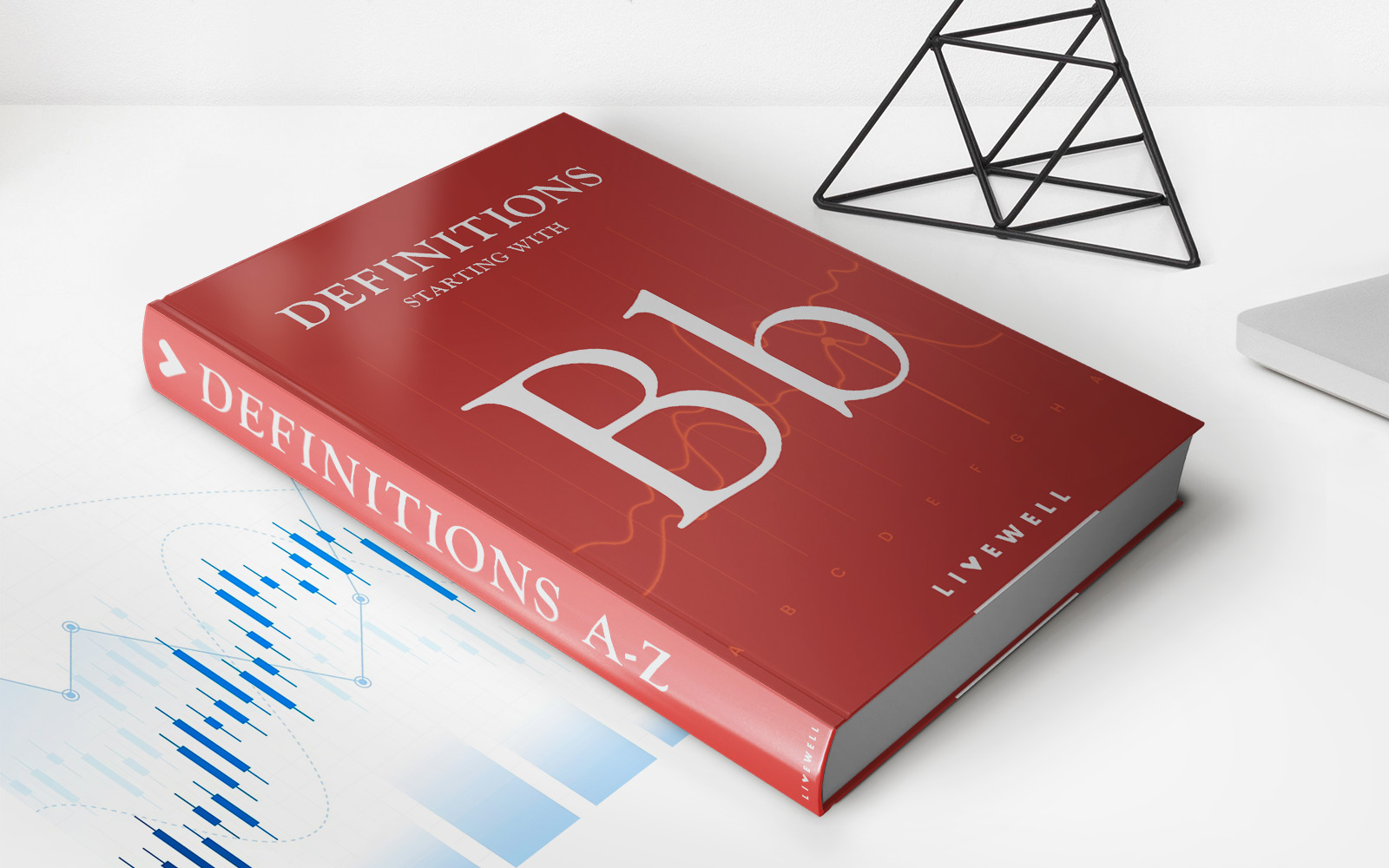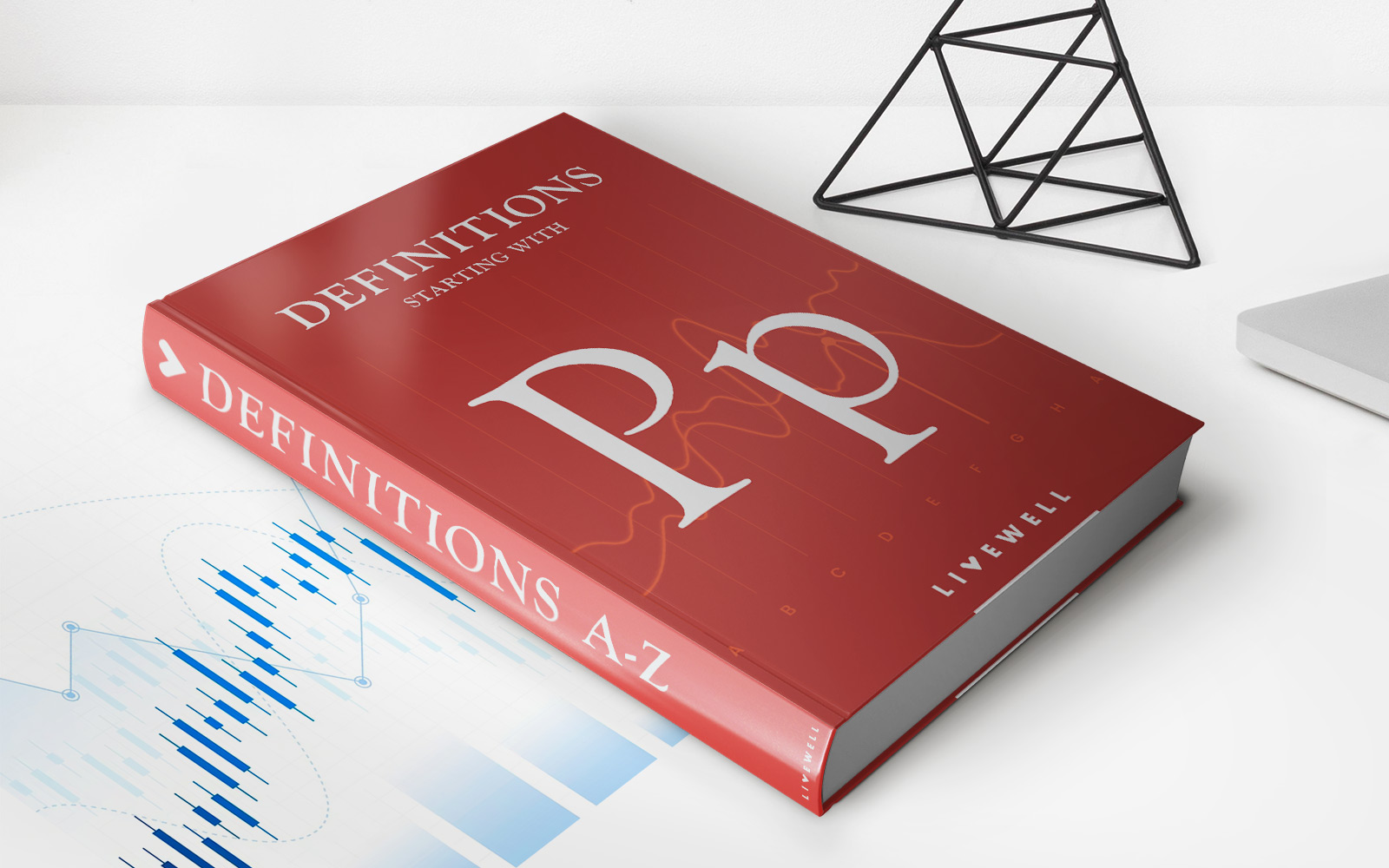Home>Finance>What Happens To My Life Insurance When I Quit My Job


Finance
What Happens To My Life Insurance When I Quit My Job
Published: November 23, 2023
Find out what happens to your life insurance policy when you leave your job. Understand the financial implications and make informed decisions about your coverage.
(Many of the links in this article redirect to a specific reviewed product. Your purchase of these products through affiliate links helps to generate commission for LiveWell, at no extra cost. Learn more)
Table of Contents
- Introduction
- Understanding Life Insurance
- Life Insurance through Your Employer
- What Happens to Your Employer-Sponsored Life Insurance When You Quit?
- Options for Continuing Life Insurance Coverage
- Taking Over Your Employer-Sponsored Life Insurance
- Converting Your Employer-Sponsored Life Insurance to Individual Coverage
- Applying for a New Life Insurance Policy
- Things to Consider Before Making a Decision
- Conclusion
Introduction
Life insurance is an essential financial tool that provides protection and financial security for your loved ones in the event of your death. Many individuals obtain life insurance coverage through their employers as part of their employee benefits package. However, what happens to your life insurance when you quit your job?
In this article, we will explore the options and considerations for individuals who have employer-sponsored life insurance and are contemplating leaving their current job. Understanding how your life insurance coverage will be affected will help you make informed decisions about your financial future.
Before delving into the implications of quitting your job on your life insurance, it’s crucial to have a solid understanding of what life insurance is and how it works.
Life insurance is a contract between an individual (the policyholder) and an insurance company. The policyholder pays monthly or annual premiums, and in exchange, the insurance company agrees to provide a death benefit to the policyholder’s designated beneficiaries upon their death.
Typically, life insurance policies fall into two main categories: term life insurance and permanent life insurance. Term life insurance provides coverage for a specific period, such as 10, 20, or 30 years, while permanent life insurance provides coverage for the policyholder’s entire life.
Now, let’s explore what happens to your employer-sponsored life insurance when you quit your job.
Understanding Life Insurance
Before we dive into the specifics of what happens to your life insurance when you leave your job, it’s important to have a clear understanding of how life insurance works.
Life insurance is a financial tool designed to provide financial protection to your loved ones in the event of your death. When you purchase a life insurance policy, you are essentially entering into a contract with an insurance company. As the policyholder, you pay regular premiums, and in return, the insurance company agrees to pay out a death benefit to your designated beneficiaries upon your passing.
There are two main types of life insurance: term life insurance and permanent life insurance.
Term life insurance provides coverage for a specified period of time, such as 10, 20, or 30 years. If you die within the term of the policy, your beneficiaries will receive the death benefit. However, if you outlive the term, the policy expires, and there is no payout.
Permanent life insurance, on the other hand, provides coverage for your entire life. This type of policy typically has a cash value component that grows over time. You can borrow or withdraw funds from the cash value if needed, but doing so may impact the death benefit.
Life insurance is a crucial component of financial planning, as it ensures that your loved ones are financially protected in the event of your untimely death. It can help cover expenses such as funeral costs, medical bills, mortgage payments, and provide financial stability for your family’s future.
Now that we have a basic understanding of life insurance, let’s delve into the specific topic of employer-sponsored life insurance and what happens when you leave your job.
Life Insurance through Your Employer
Many employers offer life insurance coverage as part of their employee benefits package. This can be a convenient and cost-effective way to obtain life insurance since the premiums are often deducted from your paycheck, and the coverage may be provided without the need for a medical exam.
Employer-sponsored life insurance typically falls into two categories: basic group life insurance and supplemental group life insurance.
Basic group life insurance is often provided to employees at no cost and offers coverage equal to a fixed percentage of the employee’s salary. This coverage may be limited, typically ranging from one to three times the employee’s annual salary.
Supplemental group life insurance allows employees to purchase additional coverage beyond the basic group life insurance. The premiums for supplemental coverage are usually based on age and the amount of coverage desired.
It’s important to review your employer-sponsored life insurance policy to understand the specific terms and conditions, including the coverage amount, beneficiaries, and any limitations or exclusions.
While having life insurance through your employer can provide valuable coverage, it’s essential to recognize that this coverage is tied to your employment with the company. When you leave your job, you need to consider what happens to your employer-sponsored life insurance.
In the next section, we will explore the implications of quitting your job on your employer-sponsored life insurance and the options available to you.
What Happens to Your Employer-Sponsored Life Insurance When You Quit?
Leaving your job can have implications for your employer-sponsored life insurance coverage. When you quit, your employer-sponsored life insurance policy may no longer be active, and you may lose the coverage provided by your employer. However, the specific outcome depends on various factors, including the type of life insurance policy, company policies, and regulations.
In most cases, when you leave your job, your employer-sponsored life insurance coverage will terminate. This means that you and your beneficiaries will no longer have access to the death benefit provided by the policy. Losing this coverage can leave you and your loved ones vulnerable financially.
It’s essential to thoroughly review your employee benefits package, including the life insurance policy documents, to understand the specific terms and conditions related to your coverage. Some employers may offer a grace period or a conversion option that allows you to continue or convert your employer-sponsored life insurance coverage after leaving the company.
Additionally, it’s important to note that employer-sponsored life insurance is typically a group policy, and the coverage amount is often tied to your salary. When you quit your job, your income changes, and this may affect the coverage amount you qualify for in any new life insurance policy you seek.
Next, we will explore the various options available to you when it comes to continuing your life insurance coverage after leaving your job.
Options for Continuing Life Insurance Coverage
Although your employer-sponsored life insurance coverage may end when you quit your job, there are several options available to continue your life insurance coverage and protect your loved ones:
1. Taking Over Your Employer-Sponsored Life Insurance: Some employers may offer the option to continue your employer-sponsored life insurance policy after you leave. This is typically known as “porting” the policy. You will need to pay the premiums directly to the insurance company instead of having them deducted from your paycheck. Keep in mind that the premiums for the ported policy may be higher compared to what you paid as an employee.
2. Converting Your Employer-Sponsored Life Insurance to Individual Coverage: Another option is to convert your employer-sponsored life insurance policy to an individual policy. This allows you to maintain the same coverage and policy terms independently from your former employer. Conversion options may have specific time limits, so it’s crucial to act promptly to explore this option.
3. Applying for a New Life Insurance Policy: If you don’t have the option to continue your employer-sponsored life insurance or if the available options don’t meet your needs, you can explore applying for a new life insurance policy. This allows you to have control over the coverage amount, policy terms, and beneficiaries. Keep in mind that applying for a new policy may require a medical exam and could result in higher premiums based on your age and health condition.
When considering these options, it’s important to assess your individual circumstances, including your financial needs, health condition, and the coverage amount required to adequately protect your loved ones. Consulting with a licensed life insurance agent or financial advisor can help you navigate these options and make an informed decision.
In the next section, we will discuss some factors to consider before making a decision about your life insurance coverage.
Taking Over Your Employer-Sponsored Life Insurance
If your employer offers the option to continue your employer-sponsored life insurance policy after leaving your job, it may be worth considering. Taking over your existing policy can provide a seamless transition and ensure that you maintain the same coverage you had as an employee.
To take over your employer-sponsored life insurance, commonly known as porting the policy, there are a few key steps to follow:
1. Review the Terms and Conditions: Carefully review the terms and conditions of your employer-sponsored life insurance policy, including any limitations, premiums, and coverage amounts. Understanding the details of the policy will help you make an informed decision.
2. Contact the Insurance Provider: Reach out to the insurance provider or the HR department of your former employer to inquire about the portability option. They can provide you with the necessary information and guide you through the process.
3. Determine the Premiums: When you port your employer-sponsored life insurance, you will become responsible for paying the premiums directly to the insurance provider. The premiums for ported policies may be higher compared to what you paid as an employee, so it’s important to assess the affordability of the premiums in your current financial situation.
4. Evaluate the Coverage Amount: Consider whether the coverage amount provided by your employer-sponsored life insurance is still sufficient for your needs. Changes in your financial situation, such as a decrease in income or increase in debt, may warrant adjusting the coverage amount. If needed, you can explore options to increase your coverage through additional policies.
5. Keep Beneficiaries Updated: Ensure that your designated beneficiaries are up to date and reflect your current wishes. Life circumstances may change, such as marriages, divorces, or the birth of children, so it’s important to review and make any necessary changes to your beneficiaries.
Taking over your employer-sponsored life insurance can be a convenient way to continue coverage without disruptions. However, it’s important to evaluate the affordability, coverage amount, and overall suitability of the policy in your current circumstances. Consulting with a licensed life insurance agent or financial advisor can provide guidance as you navigate the decision to take over your employer-sponsored life insurance.
In the next section, we will discuss another option for continuing life insurance coverage after leaving your job: converting your employer-sponsored life insurance to individual coverage.
Converting Your Employer-Sponsored Life Insurance to Individual Coverage
If you are not able to or prefer not to take over your employer-sponsored life insurance policy after leaving your job, another option to consider is converting it to an individual life insurance policy. Converting your employer-sponsored life insurance to individual coverage allows you to maintain the same coverage and policy terms independently from your former employer.
Here are the key points to keep in mind when considering the conversion option:
1. Review Conversion Guidelines: Check the terms and conditions of your employer-sponsored life insurance policy to understand if it offers a conversion option and any specific guidelines or time limits associated with it. Some policies may require conversion within a certain timeframe, typically within 30 to 60 days of leaving your job.
2. Contact the Insurance Provider: Get in touch with the insurance provider or the HR department of your former employer to initiate the conversion process. They will provide you with the necessary forms and instructions to convert your policy to an individual one.
3. Assess Premiums and Coverage: When converting to individual coverage, it’s essential to evaluate the premiums and coverage amount. The premiums for the converted policy may be different from what you paid as an employee, so ensure that the new premiums align with your budget. Additionally, consider if the coverage amount provided by the converted policy is sufficient for your current needs.
4. Underwriting and Medical Requirements: Conversion typically does not require a medical exam or new underwriting. This means that your health condition at the time of conversion may not impact the eligibility or cost of the new policy. However, it’s important to carefully review the conversion guidelines to understand any specific requirements.
5. Maintain Continuity of Coverage: Converting your employer-sponsored life insurance to individual coverage allows you to maintain continuity of coverage without any gaps. This ensures that you and your loved ones remain protected financially, even after leaving your job.
Converting employer-sponsored life insurance to individual coverage provides flexibility and control over your life insurance policy. It allows you to customize your coverage, choose your beneficiaries, and have the ability to adjust the policy as your needs change.
When considering the conversion option, it’s beneficial to compare quotes from multiple insurance providers to ensure you are getting the best coverage and premiums. Consulting with a licensed life insurance agent or financial advisor can provide guidance as you navigate the process of converting your employer-sponsored life insurance to individual coverage.
In the next section, we will discuss an alternative option for obtaining life insurance coverage after leaving your job: applying for a new life insurance policy.
Applying for a New Life Insurance Policy
If you are not able to continue your employer-sponsored life insurance or if the available options do not meet your needs, applying for a new life insurance policy is another viable option. Applying for a new policy allows you to have control over the coverage amount, policy terms, and beneficiaries.
Here are the key considerations when applying for a new life insurance policy after leaving your job:
1. Assess Your Coverage Needs: Evaluate your financial obligations, such as mortgage payments, outstanding debts, and future expenses, to determine the appropriate coverage amount needed to provide financial security to your dependents. Consider any changes in your financial situation since your employer-sponsored life insurance, such as the birth of a child, a change in marital status, or increased financial responsibilities.
2. Choose the Right Type of Life Insurance: There are different types of life insurance to consider, including term life insurance and permanent life insurance. Term life insurance provides coverage for a specific period, while permanent life insurance offers coverage that lasts your entire lifetime. Research and understand the features and benefits of each type to select the one that aligns with your needs and financial goals.
3. Research Insurance Providers: Compare quotes and research different insurance providers to find a reputable company that offers competitive rates and quality customer service. Consider factors such as the company’s financial stability, customer reviews, and claims settlement history.
4. Undergo a Medical Examination: To determine your insurability and premium rates, most life insurance companies require applicants to undergo a medical examination. The examination assesses factors such as your overall health, medical history, and lifestyle. The results of the examination will play a significant role in determining your eligibility and premiums.
5. Consider Riders and Additional Coverage: Explore optional riders or additional coverage options that can enhance your life insurance policy. Riders can provide additional benefits such as accelerated death benefit, waiver-of-premium, or a disability income rider. Assess these options based on your specific needs and financial situation.
6. Review the Policy Terms and Exclusions: Carefully review the terms, conditions, and exclusions of the policy before finalizing your application. Pay attention to details such as policy duration, premium payment frequency, and any policy exclusions that may impact the coverage.
Applying for a new life insurance policy after leaving your job gives you the flexibility to tailor the coverage to your specific circumstances. Ensure that you provide accurate and complete information during the application process to avoid any issues with the policy in the future.
Consulting with a licensed life insurance agent or financial advisor can provide expert guidance and help you navigate the process of applying for a new life insurance policy.
Next, we will discuss some important factors to consider before making a decision regarding your life insurance coverage after leaving your job.
Things to Consider Before Making a Decision
As you navigate the options for continuing your life insurance coverage after leaving your job, there are several important factors to consider before making a decision:
1. Financial Needs: Assess your financial obligations, current income, and future expenses to determine the appropriate coverage amount needed to provide financial security to your loved ones. Consider factors such as mortgage payments, outstanding debts, education expenses, and the lifestyle you want for your dependents.
2. Coverage Gaps: Evaluate whether there will be any gaps in your life insurance coverage if you do not take action after leaving your job. Leaving yourself and your loved ones unprotected can leave them vulnerable in the event of unforeseen circumstances.
3. Affordability: Consider the affordability of the premiums associated with the available options for continuing or obtaining life insurance coverage. Review your budget and assess whether the premiums can be comfortably accommodated within your current financial situation.
4. Changing Coverage Needs: Determine if your coverage needs have changed since you initially obtained employer-sponsored life insurance. Factors such as marriage, starting a family, or an increase in financial obligations may require adjustments to your coverage amount.
5. Policy Terms and Conditions: Thoroughly review the terms, conditions, exclusions, and riders associated with any life insurance policy you are considering. Make sure you have a clear understanding of how the policy works, any limitations or restrictions, and any additional benefits or features that align with your needs.
6. Future Employment: Consider your future employment plans and whether you anticipate having access to life insurance coverage through your new employer. Understanding potential coverage opportunities can help you make informed decisions regarding your current life insurance needs.
7. Consult with Professionals: Seek guidance from licensed life insurance agents or financial advisors who can provide expert advice tailored to your specific circumstances. They can help you evaluate the available options, understand the implications, and make an informed decision that aligns with your financial goals.
Take the time to carefully weigh these considerations, ensuring that your life insurance coverage adequately protects your loved ones and provides the financial security you desire. By making a well-informed decision, you can have peace of mind knowing that your loved ones will be taken care of in the event of your passing.
Now, let’s conclude our discussion on life insurance coverage after leaving your job.
Conclusion
When you leave your job, understanding what happens to your life insurance coverage and exploring your options is crucial for maintaining financial security for your loved ones. Employer-sponsored life insurance policies may terminate when you quit, but there are several avenues to continue or obtain coverage.
If your employer offers the option, taking over your employer-sponsored life insurance policy allows for a seamless transition and maintains the same coverage and policy terms independently. Alternatively, converting your employer-sponsored life insurance to an individual policy provides flexibility and control over your coverage. You can also explore applying for a new life insurance policy that aligns with your current needs and financial situation.
Before making a decision, consider factors such as your financial needs, coverage gaps, affordability of premiums, changing coverage needs, policy terms and conditions, and future employment plans. Consulting with licensed professionals can help guide you through the process and ensure you make an informed decision.
Life insurance is a critical component of financial planning, providing peace of mind and financial security to your loved ones. By understanding your options and taking the necessary steps to continue or obtain coverage, you can safeguard your family’s financial future.
Remember to thoroughly review your employer-sponsored life insurance policy, research insurance providers, and carefully assess your coverage needs. By doing so, you are taking proactive steps to protect your loved ones and provide a financial safety net in case the unexpected occurs.
Take the time to evaluate your options and consider seeking guidance to make the best decision for your specific circumstances. Remember, life insurance is an essential tool that can provide long-lasting benefits and peace of mind for you and your loved ones.














